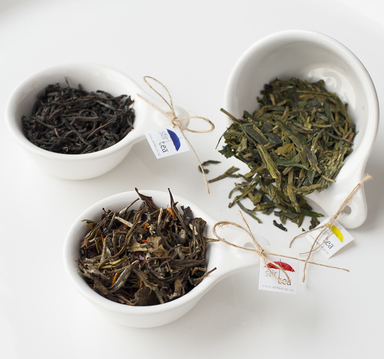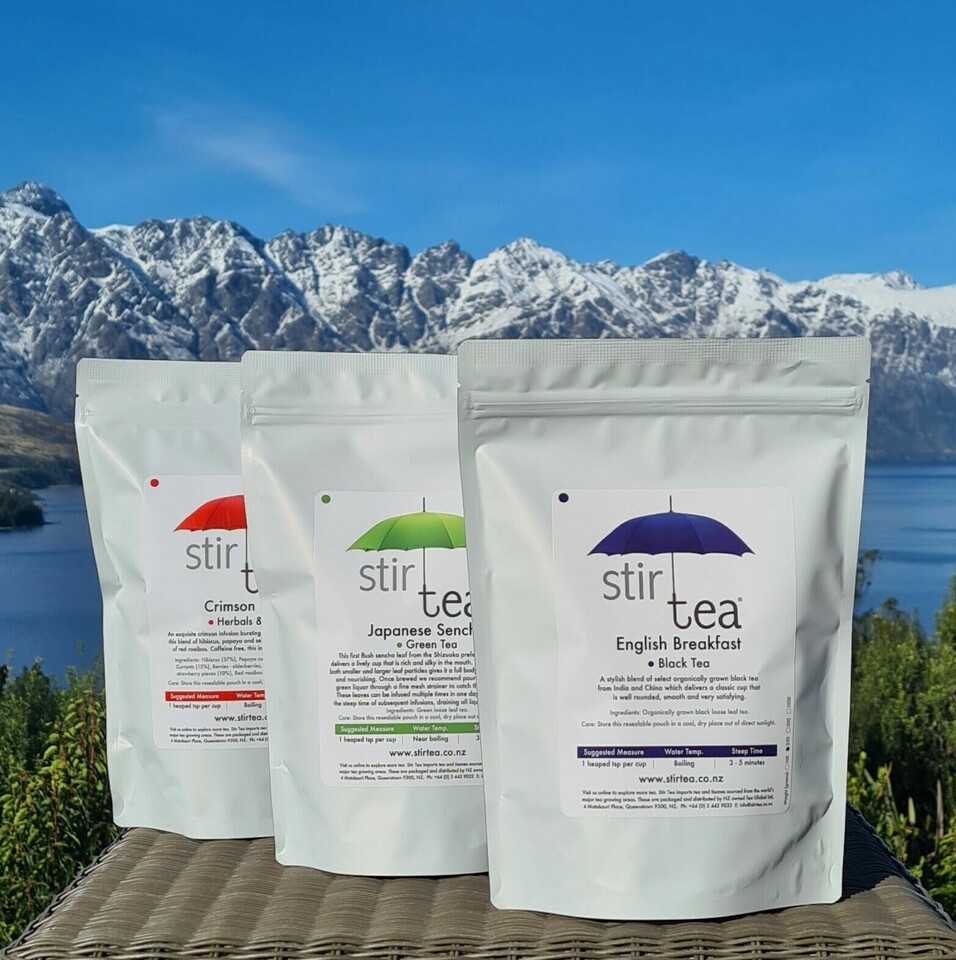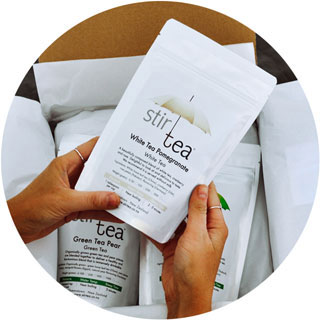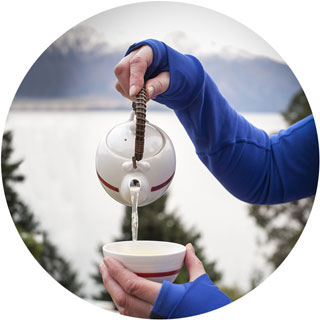Most Saturday's throughout spring and summer, we operate our tea stand at the Remarkables Market at Frankton, Queenstown and get to talk tea with tea lovers. We get great inspiration from their tea stories and also have an opportunity to answer their questions.
One of the most common discussions I have is, what is the difference between black, green and white tea.
To answer this I need to set aside things like site specific growing or harvest conditions unique to a country or individual tea garden (e.g soil, temperature, altitude, rain, wind, harvest time, method etc etc ) and focus on one fundamental fact - all tea is from the leaf of the camellia sinensis plant. I also need to state that I am referring to true tea here as opposed to our range of caffeine free herbal and fruit blends which do not contain any tea leaf.
In very general terms the major difference between the different categories is what happens once the leaf is plucked from the bush and the tea master applies their craft of processing the leaves. Like all vegetable matter tea leaves contain oxidising enzymes (the molecules responsible for the yellowing of leaves in autumn). As soon as the leaf is plucked, the oxidisation of these enzymes start. The tea master will choose to control, accelerate or halt this oxidisation and this will determine the type of tea, it is different for each class of tea. There can be several steps in the process but in summary the differences are:
Black Tea - the cell structure of the plucked leaf is broken and the leaves are left to react to the air - fully oxidised and then dried (heated to a temperature to stop the enzymes causing the oxidation)..
Green tea - Heat is applied as soon after the pluck as possible to halt the enzymes which cause oxidation so it is unoxidised. The leaves are then rolled and dried.
White tea leaves are simply plucked and air dried - the tea is left in its natural state. Natural oxidation does occur during this process but because the leaf is not manipulated the oxidation progresses very slowly.
Oxidation Resource References: Tea, Aromas and Flavours Around the World - Lydia Gautier and The Tea Drinkers Handbook - Francois-Xavier Delmas, Mathias Minet, Christine Barbaste
Tisane or Tea - What is the Difference?
In the techincal world of tea, we only ever refer to tea as the leaf (and sometimes stems) of the camellia sinesis plant. Tisanes are infusions brewed from other leaves or flowers e.g: rooiboos. All blends offered in our herbals and fruits selection (red umbrellas) are tisanes.
Posted: Saturday 11 April 2020







